
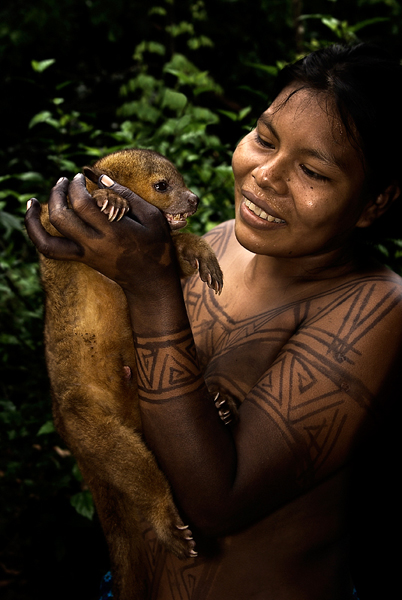
Embera woman with her pet kinkajou
Not far from the Panama Canal, in the lush rainforest interior of Panama’s Chagres National Park, a young boy wearing nothing but an orange loincloth sits daydreaming while his mother carefully paints long dark lines on his light brown skin. With black stained fingers, she dips bamboo into a coconut filled with jagua juice (shredded from a jagua nut) and applies the henna-like substance for decorative body art and protection from pesky insects that live in the jungle.

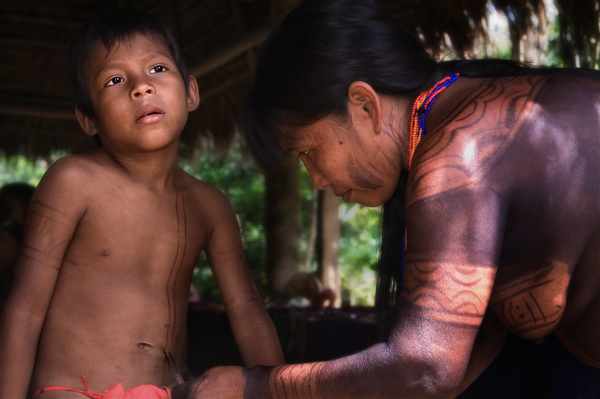
The geometric design crisscrossing his back and chest will resemble a fur-de-lance snake, a common design choice among the males in contrast to the flowers and butterflies tattooed on the girls. Jagua art is just one of the practices that Embera Indians have continued from centuries past. Many embrace the traditional beliefs, native dress, herbal medicine, ceremonial dance, basket crafts and lifestyle of their ancestors who migrated from Colombia’s Choco region long before the arrival of the Conquistadors.
Prior to settling here in the 1970s, Panama’s Embera Indians moved through impenetrable jungles in small family groups, erecting thatched huts along riverbanks on 10-foot stilts to protect themselves against jaguars, flooding and attacking Waounan and Kuna tribes. Their survival depended on harvesting plants for medicine, hunting monkeys & wild boar with blowpipes and poison-tipped spears, fishing and black magic.

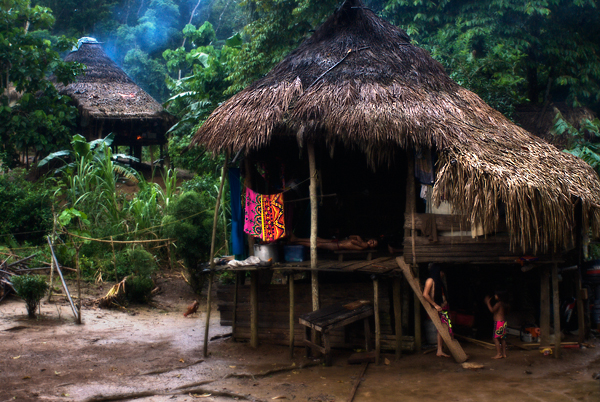
Today, living within what is now the 129,000 hectare Chagres National Park, they’ve had to adapt to some government regulations. Hunting is forbidden. Education is mandatory. They now rely on fishing and a few chickens for their daily subsistence and welcome a different outsider to live in their community each year—although most of the first year teachers appointed to Embera villages only last 6 weeks or so in the primitive surroundings before they flee back to civilization.
Emberas still live in thatched stilted huts with a single room, wear traditional clothes (loin-cloths/print skirts), practice herbal medicine and embellish their bodies with jagua henna-like tattoos. They’ve adopted modern conveniences too, like cooking oil, motor fuel for their chestnut-carved piragua canoes and even a few cell phones. To create economic solutions for their growing needs without compromising their culture, a few villages have opened their communities to tourism.

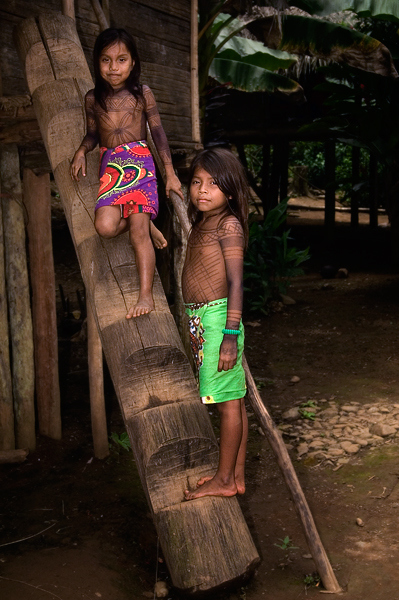
Numerous operators from Panama City offer day trips, which in reality are 1-2 hour village visits (adding 4+ hours round trip for road and piragua transfer) that rush through a set itinerary. Only two villages accept overnight guests, Drua and Embera Puru, but never mentioned in guide books. Trips begin with an hour’s drive north to Lake Alajuela, where tourists travel upriver in a teetering piragua, motorized for the one-two hour journey.

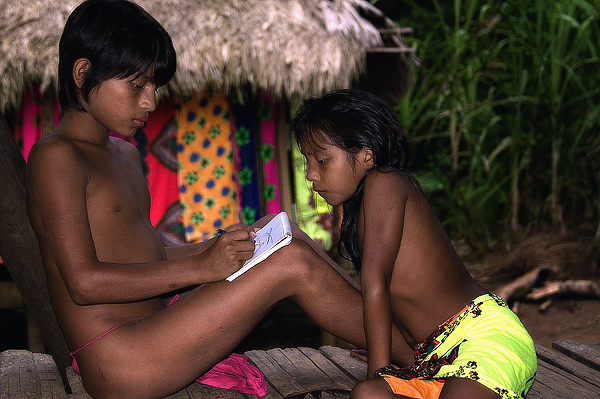
Our favorite village for overnight stays is Embera Puru, the most isolated and authentic village in Chagres National Park. Each experience has been different, but always heart-warming! The Embera are a gentle people, good-humored and eager to share stories and experiences once their initial stoic exterior melts. We’ve had opportunities to swim, fish, hike, follow the medicine man through the jungle to collect plants, play with the children on the riverbank, go boating and even get a jagua tattoo. But the memories that linger longest are the times we’ve spent in different huts—watching children sketch in our notebook, tasting a special communal “sour cream-of-corn yogurt” dish, and sharing personal stories through our interpreter as the night turned to blackness while lying on the bamboo floor around the fire…


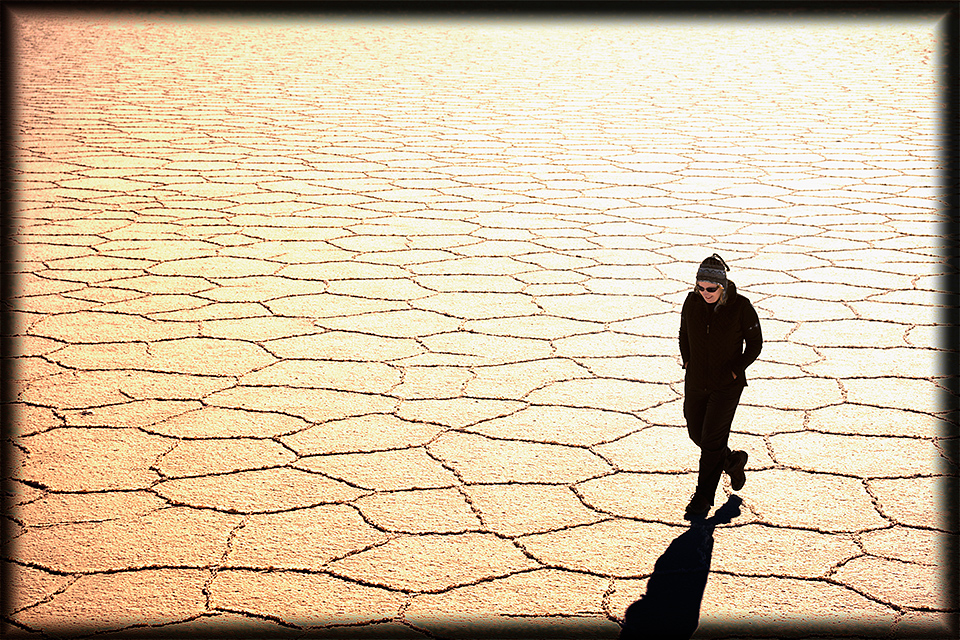
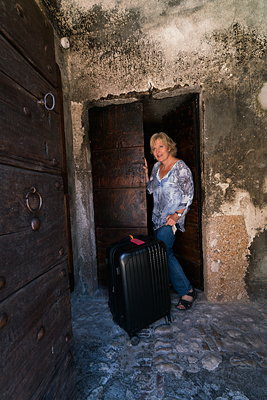
Klaus Heller - Hello,
I am writing a guide book about Panama and I am looking for a picture with a tatooed Emberá. Above picture with the 2 kids on the wooden ladder would fit. Maximum size would be a width of 2,5 inch (height resuls), 300 dpi.
The guide book will be published in German language only, 4.000 copies printed.
Please make me a good offer!
Kind regards,
Klaus
admin - Hi Klaus, yes that is very possible. I’ll contact you by email with the details…Thanks!
Panama Yacht and Fishing Charters - I love these photos of the Embera in Panama!